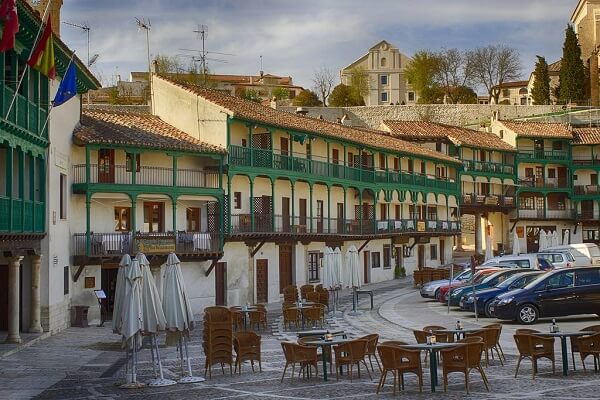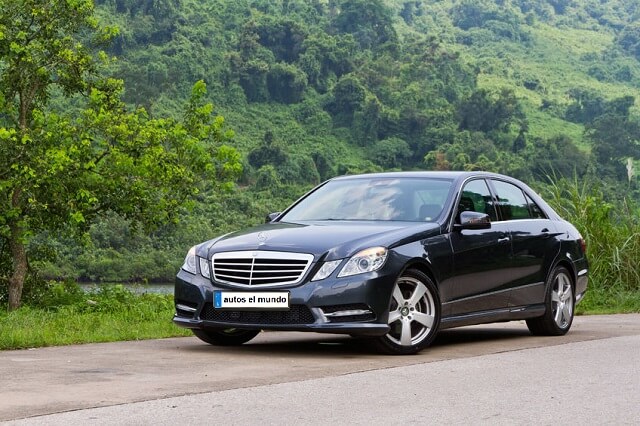
Go sightseeing and enjoy your holidays in Spain and around the world travelling comfortably with our qualified drivers, without having to worry about traffic or the journey.
Our drivers have years of experience and can take you on visits and show you panoramic views of the city.
Simply ask the driver and they will offer you a choice of the most varied places to visit and events to experience as well as the typical gastronomic hotspots in each city.
Do not hesitate to ask any questions you have about your trip. Just give Autos el Mundo a call or send us an email and we will be happy to help and will even suggest ideas to make your stay as enriching as possible.
The most requested excursions around Madrid that must not be missed are the following:
EXCURSIONS FROM MADRID
El Escorial / Valle de los Caídos:
One of the most emblematic places in the Comunidad de Madrid is located in the Madrid Mountains, where Phillip II ordered the famous Monastery of El Escorial to be built in honour of San Lorenzo -the region’s most popular tourist attraction.
You can wander around the surrounding areas and marvel at the village, which has origins in the Middle Ages. You can also visit the church of San Bernabé, the monastery of Prestado, La Fresneda, El Campillo, La Ermita de la Virgen de la Herrería, the Casita del Principe and La Silla de Felipe II.
If you are a nature enthusiast, El Escorial is located on Mount Abantos, which offers you a panoramic view, providing it is a clear day. On the east side you will be able to see the Madrid region and a spectacular view of the El Escorial monastery and on the west side the province of Ávila can be observed.
Toledo:
Toledo is known by many names like the Imperial City, the City of the Three Cultures or the Gate of the Sagra.
The fact that the city dates back to the Bronze Age, makes the place a must-see. It is a walled city, to a certain extent because of the winding river Tagus, which undoubtedly served as a natural defence, and due to the buildings of Arabic origin. The city possesses some beautiful gates like that of Bisagra, Puerta del Sol, Puerta del Vado and la Puerta de Alfonso VI.
The sword-making industry, which dates back to the Roman period, has been much sought after for the creation of weapons in battle films like Robin Hood, The Lord of the Rings and Highlander.
The city of Toledo was declared a historic-artistic site and later a world heritage site by UNESCO for its extensive monumental heritage, which includes the likes of the Santa María Cathedral, the Alcázar, San Servando Castle, San Juan de los Reyes Monastery and Tornerías Mosque.
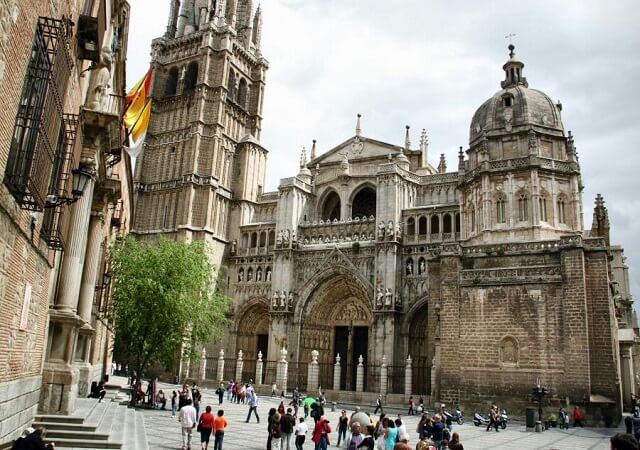
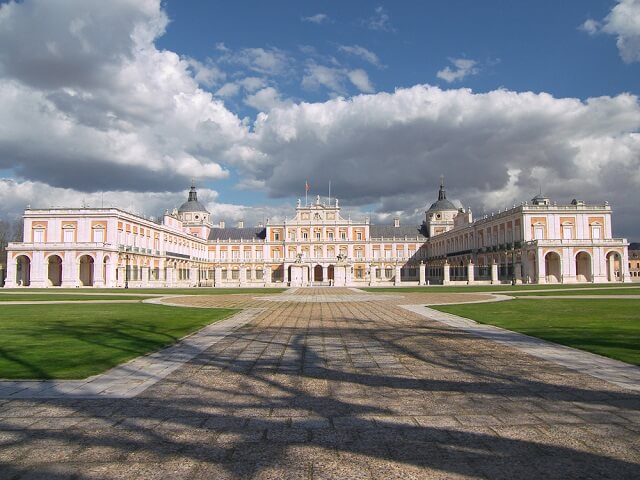
Aranjuez:
Aranjuez, known as the Royal Site and Village of Aranjuez, is the last city of the Comunidad de Madrid. It is famous for the Royal Palace, declared world heritage site, its gardens around the village and the rectangular layout of its streets.
It is surrounded by the rivers Tagus, Jarama and Algodor, meaning its vegetation is also highly valued, as elms, poplars, ashes, cypresses and olive trees can be seen in the city. This beautiful village is the perfect place to stroll around, especially in springtime.
Other interesting places to visit in Aranjuez are the casino, San Antonio church, La Casa del Labrador, San Pascual convent and Real Cortijo de San Isidro.
And if in season you can enjoy the local gastronomy, which is famous for its strawberries, asparagus and pheasant.
Chinchón:
Chinchón is a picturesque town located in the southwest of Madrid in the Comarca de Las Vegas. The Plaza Mayor is considered one of the typical main squares from the Middle Ages, with porches and balconies all the way around it. It is usually one of the most popular attractions of the town as it is so well preserved.
The convent of San Agustín, which is currently Chinchón’s national parador hotel, is a nice place to visit and rest for a while. And finally there is the Renaissance style castle of Los Condes de Chinchón. The War of Spanish Succession saw the castle destroyed and only the lower floor is still preserved after the siege, although it is in good condition.
Segovia/La granja:
The 818-metre long Aqueduct of Segovia is the most important work of Roman engineering in Spain and one of the best-preserved and most notable monuments left by the passage of the Romans through the Iberian Peninsula.
In the old quarter there are several historic buildings in both religious and civil contexts. The Alcázar of Segovia is located on a rock between the Eresma and Clamores rivers. There is the Monastery of San Antonio el Real with its Mudéjar style ceilings. The Cathedral of Santa María was the last Gothic cathedral built in Spain.
The wall around the historic centre now only has three preserved gates. La Casa de la Moneda is Europe’s oldest industrial building. Because of Segovia’s climate, the city possesses some beautiful well-kept gardens that are scattered around the city.
In terms of gastronomy, Segovia is known for its mesons and taverns, which serve local food. A very popular attraction when visiting Segovia is to eat cochinillo (suckling pig) and a delicious Ponche Segoviano for dessert.
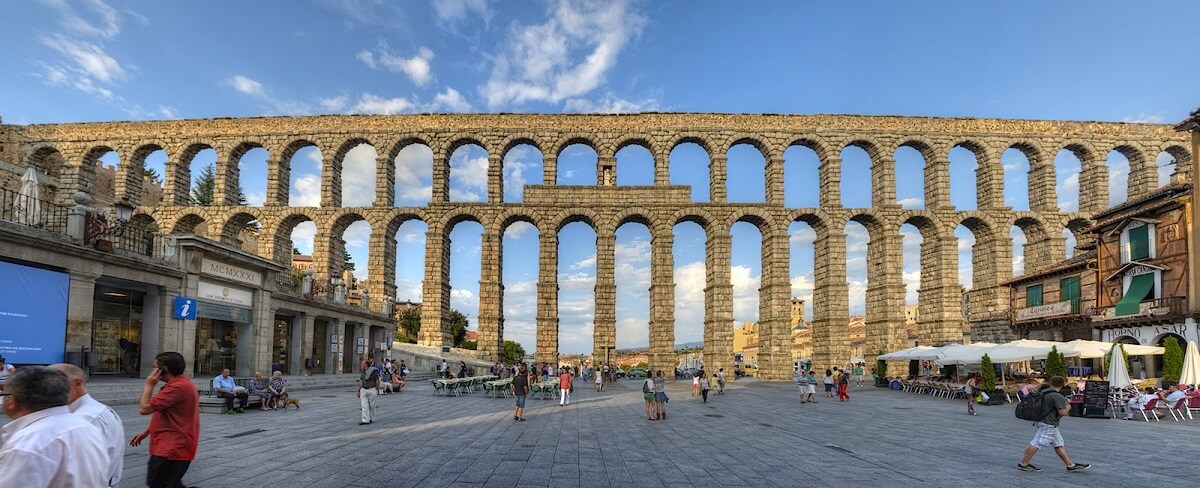
Avila:
The city of Ávila is located on the river Adaja and its origins date back to the Neolithic period from which the Dolmen del Prado de las Cruces is preserved. This is one of the cities in Spain with the most of its Romanesque wall preserved and this symbolic aspect can be toured around various parts of the city. The cathedral of Salvador de Ávila, the church of San Pedro, the monastery of Santo Tomás, the sanctuary of Nuestra Señora de Sonsoles, the Mansión de los Velada and the convent Santa Teresa are all worth seeing. Ávila is famous for its medieval market.
The most characteristic cuisine includes Judías del Barco (white beans from Barco de Ávila cooked with sausage and chorizo) Chuletón de Ávila (T-bone steak), Patatas Revolconas (potato dish) and Yemas de Santa Teresa (cakes made from egg yolks).

EXCURSIONES FROM BARCELONA
Girona
Girona is a walled city on the confluence of several rivers like the Ter and the Onyar, which has left behind the characteristic and picturesque hanging houses. The city is known for possessing the best-preserved medieval monuments in Spain in its old Jewish quarter, known as El Call, where you can find what was believed to be an ancient synagogue.
Girona also possesses Arabic baths, which are a Christian Romanesque construction. La Rambla de la Libertad is one of the city’s most emblematic places. Other monuments to visit include the Cathedral of Santa María, which has three architectural styles: Romanesque, Gothic and Baroque. There is also the monastery of Sant Pere de Galligants, the chapel of Sant Narcissus and the basilica of Sant Feliu.
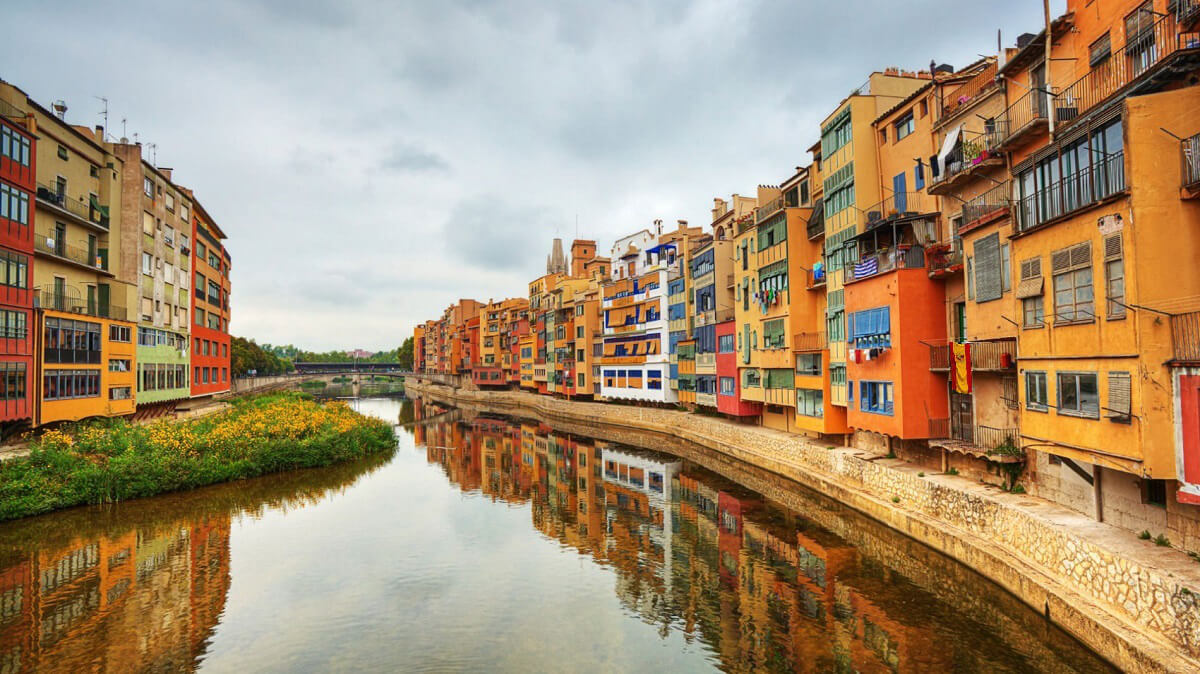 Costa Brava:
Costa Brava:
200 kilometres of beaches cover this stretch of coast which is full of fishing villages and coves from Blanes to Portbou. The highlights include the Casa Rosa in Calella de Palagrugell, the Casa Dalí museum in Cadaqués and the botanical gardens in Cap Roig. In the summer the area also becomes a place of leisure like no other, with several places to visit ranging from water parks to casinos and theatres.
One of the most beautiful and impressive natural areas is the Cap de Creus nature reserve, due to the l’Empordà marshes and where you can observe cliffs, meadows, forests, water coves and deeply eroded rocks.
Sitges is known for its broad cultural heritage and it has been a place of reference for modernist intellectuals. The town still also possesses medieval elements, which makes the city an intriguing place to tour. Stiges has one of the best beaches in urban territory in Europe and must be visited if you are in town at the right moment of the year. Stiges also has a great nightlife scene.
Montserrat is an impressive rocky massif located fifty kilometres from Barcelona. Today the water erosion of the different materials can be observed in its characteristic relief, as it has resulted in multiple cracks, pointed tips, valleys and caves. Located on top of the mountain at 720m altitude there is a monastery, situated there for the view of the Virgin of Montserrat.
In the mountains you can find many small hermitages and churches. It is an amazing place with a flowing sense of spirituality and peace.

